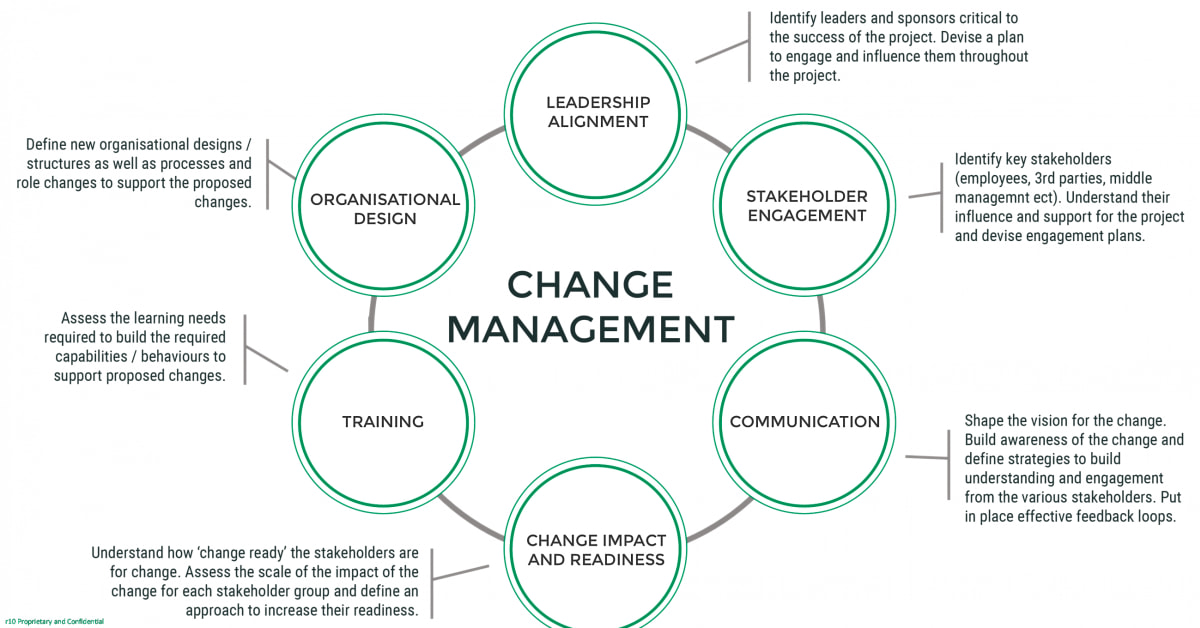In today’s fast-paced and ever-changing business landscape, effective leadership is crucial for success. One of the key skills that successful leaders possess is the ability to lead change. This is because change is inevitable and necessary for growth and innovation, but it can also be challenging and met with resistance. In this article, we will explore 10 effective strategies for leading change in business. Whether you are a seasoned leader or just starting out in your management career, these strategies will help you navigate through change and drive positive outcomes for your organization. So, if you are ready to take your leadership skills to the next level and learn how to effectively lead change in your business, read on!
Leading change is an inevitable part of being a leader in the business world. Whether it’s due to market trends, technological advancements, or internal restructuring, change is something that every company will face at some point. As a leader, it is your responsibility to guide your team through these transitions with confidence and success. However, this task can be daunting if you lack the necessary skills and strategies. In this article, we will cover 10 effective strategies for leading change in your business that will help you navigate through this process with ease.
The first step in leading change is understanding the reasons behind it. This will not only help you communicate the change to your team, but it will also give you a better understanding of its purpose and how it will benefit your company in the long run.
Communication is key when it comes to leading change. Be transparent with your team and communicate the reasons for the change, how it will affect them, and what their role is in the process. Keep them updated throughout the transition to ensure everyone is on the same page.
A strong team is essential for successfully implementing change. Make sure your team is cohesive and has a strong sense of trust and respect for one another. This will help them navigate through the changes together and support each other during challenging times.
In today’s fast-paced business world, adaptability is crucial. As a leader, you must foster a culture that embraces change and encourages your team to be open-minded and willing to try new things. This will not only help with the current changes but also prepare your team for future changes.
As a leader, you must lead by example. Your team looks up to you, so it’s essential to model the behavior you want to see from them. Be open to change, communicate effectively, and show your team that you are committed to leading them through this transition.
During times of change, it’s crucial to listen to your team’s feedback. They may have valuable insights and ideas that can help improve the change process. Encourage an open-door policy and make sure your team feels comfortable sharing their thoughts with you.
Using time management strategies is essential when leading change. Set realistic timelines and prioritize tasks to ensure that the change process runs smoothly. This will also help you stay organized and focused during this time-consuming process.
Change often requires leaders to make difficult decisions. It’s crucial to gather all the necessary information and weigh the pros and cons before making a decision. Be transparent with your team about why a particular decision was made.
Not everyone will be on board with the change, and it is your responsibility as a leader to address any resistance within your team. Listen to their concerns, provide reassurance, and explain how the change will benefit them in the long run.
Finally, it’s essential to celebrate successes along the way. Leading change can be challenging, and acknowledging and celebrating small wins will keep your team motivated and energized throughout the process. By following these 10 effective strategies, you can lead change in your business with confidence and success.
Celebrating Successes
Acknowledging and celebrating small wins keeps your team motivated. It is important to recognize and appreciate the efforts of your team members during a time of change. By highlighting their successes, you are showing them that their contributions are valuable and that they are making a difference in the organization.
Leading by Example
Your team looks up to you as a leader, so lead by example.
As a leader, your actions and behaviors have a direct impact on your team. If you want your team to embrace change and adapt to new ways of doing things, you must lead by example.
This means being willing to step out of your comfort zone and try new things, being open to feedback and suggestions, and showing a positive attitude towards change. Your team will follow your lead, so make sure you are setting a good example.
Developing Effective Communication Skills
The key to successful change management lies in effective communication. As a leader, it is crucial to have strong communication skills in order to effectively convey the need for change, the reasoning behind it, and the steps that will be taken to implement it.
One important aspect of developing effective communication skills is being able to listen and understand the concerns and perspectives of your team members. By actively listening and addressing their concerns, you can build trust and support for the change.
Another key component is being able to clearly articulate the vision and goals of the change. This includes providing regular updates and progress reports to keep everyone informed and on track.
Additionally, leaders should be open to feedback and be willing to adapt their communication style based on the needs of their team. This includes being aware of any cultural or language barriers that may require different forms of communication.
By focusing on developing effective communication skills, leaders can create a more positive and collaborative environment during times of change. This will not only help with the success of the current change, but also lay the foundation for future changes in the organization.
Dealing with Resistance
When implementing change in your business, it is important to acknowledge that there may be resistance from your team. This can be due to fear of the unknown, discomfort with change, or simply being comfortable with the current way of doing things.
As a leader, it is your responsibility to address any resistance within your team and provide reassurance. This can be done through open communication and addressing any concerns or questions they may have. Let them know that their opinions and feelings are valid and that you are there to support them through the transition.
Be transparent about the reasons for the change and how it will benefit the team and the business as a whole. This can help alleviate any doubts or concerns they may have.
Additionally, it is important to involve your team in the change process. Ask for their input and involve them in decision-making. This will help them feel more invested in the change and less resistant towards it.
Remember to be patient and empathetic towards your team during this time of transition. Change can be difficult, but with proper communication and reassurance, you can lead your team through it successfully.
Promoting an Adaptive Culture
One of the key factors in successfully leading change is promoting an adaptive culture within your team. This means creating an environment where change is seen as a natural and necessary part of the business, and where employees are encouraged to embrace it.
There are a few ways you can promote an adaptive culture within your team:
- Lead by example: As a leader, your actions speak louder than words. Show your team that you are open to change and willing to adapt by being flexible and embracing new ideas yourself.
- Communicate openly: Keep your team informed about any changes that are coming and why they are necessary. This will help them understand the reasons behind the changes and be more open to them.
- Encourage feedback: Create a culture where employees feel comfortable giving feedback and sharing their thoughts on changes. This will not only help them feel heard, but also provide valuable insights that can improve the change process.
By promoting an adaptive culture, you are setting your team up for success when it comes to leading change. It will help them be more open to new ideas and approaches, and make the transition smoother for everyone involved.
Building a Cohesive Team
Change can be a challenging and stressful time for any team, and as a leader, it is your responsibility to ensure that your team remains cohesive and united through these transitions. A strong team is essential for navigating through change and achieving success. Here are some strategies you can implement to build a cohesive team during times of change:
1. Communicate openly and transparently with your team about the changes that are happening. Keep them informed and involved in the decision-making process. This will help build trust and foster a sense of ownership in the change.
2. Foster a culture of collaboration and teamwork within your team. Encourage open communication, respect for different perspectives, and a willingness to work together towards a common goal.
3. Lead by example and demonstrate the values and behaviors you expect from your team. This will help create a sense of unity and alignment within the team.
4. Acknowledge and address any conflicts or concerns that may arise within the team during times of change. Encourage open dialogue and work towards finding solutions together.
5. Provide support and resources for your team to adapt to the changes. This could include training, coaching, or additional resources to help them navigate through the transition successfully.
6. Celebrate small wins and milestones along the way to keep morale high and motivate your team to keep moving forward.
7. Create opportunities for team-building activities to strengthen relationships and foster a sense of unity within the team.
8. Encourage feedback from your team and actively listen to their concerns and suggestions. This will help create a sense of inclusivity and empower your team to contribute to the change process.
9. Be patient and understanding with your team. Change takes time, and everyone adapts at their own pace. Show empathy and support to help your team through any challenges they may face.
10. Continuously communicate and reinforce the vision and goals of the change to keep your team focused and motivated towards achieving them.
By implementing these strategies, you can build a strong and cohesive team that will not only navigate through change successfully but also come out stronger and more united on the other side.Leading change is a complex but necessary part of business management. By implementing these 10 effective strategies, you can successfully navigate through change and lead your team to success. Remember to communicate clearly, foster a culture of adaptability, and celebrate successes along the way. With these skills and strategies, you can confidently lead change in your business.






